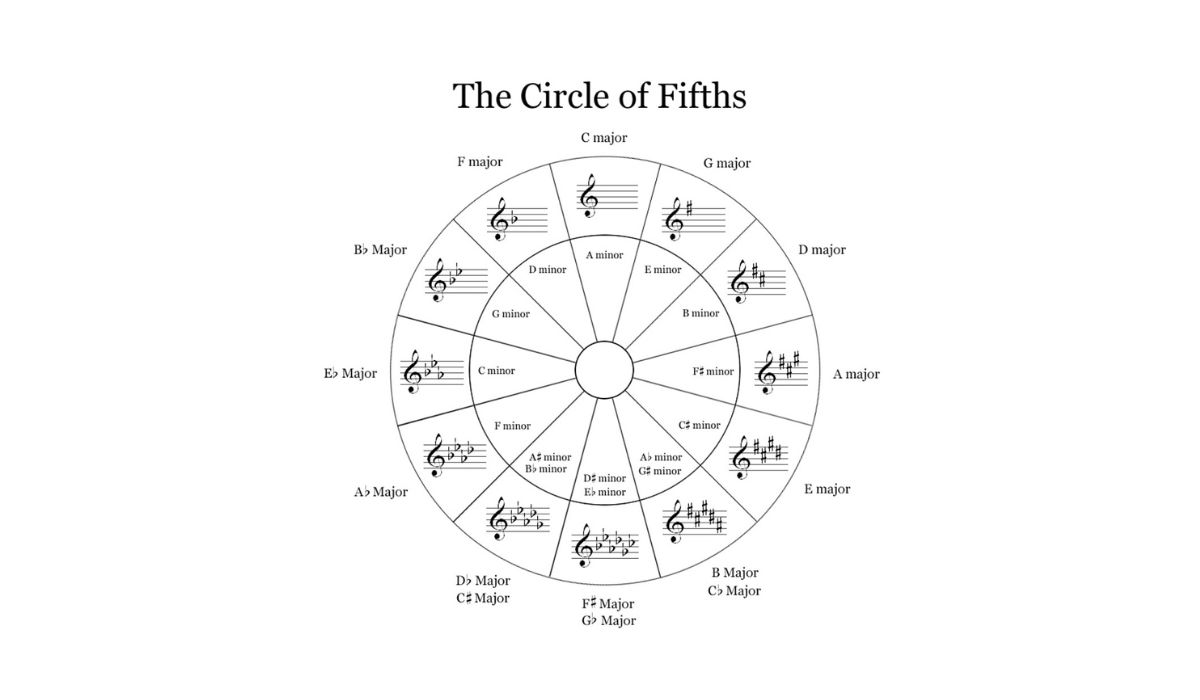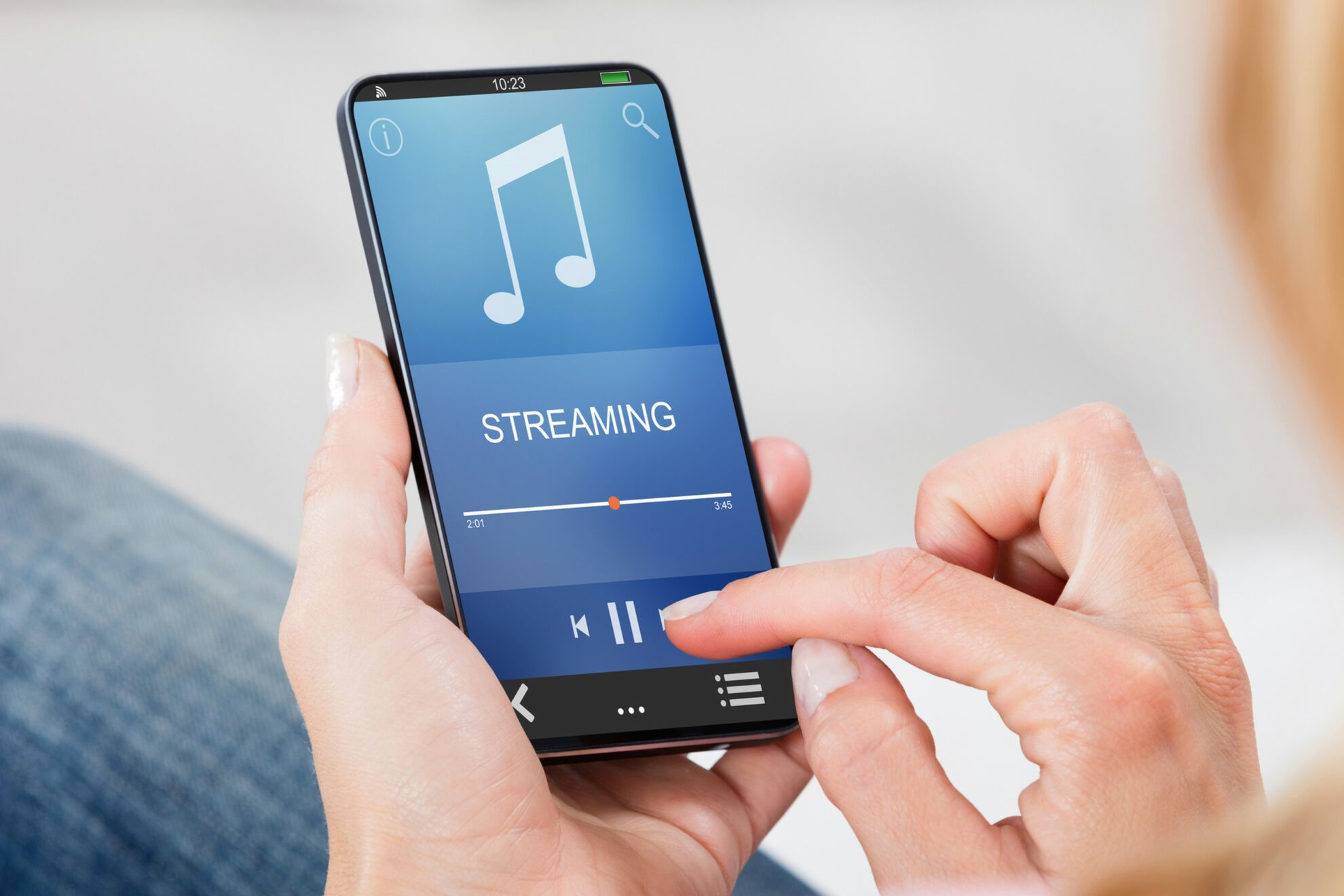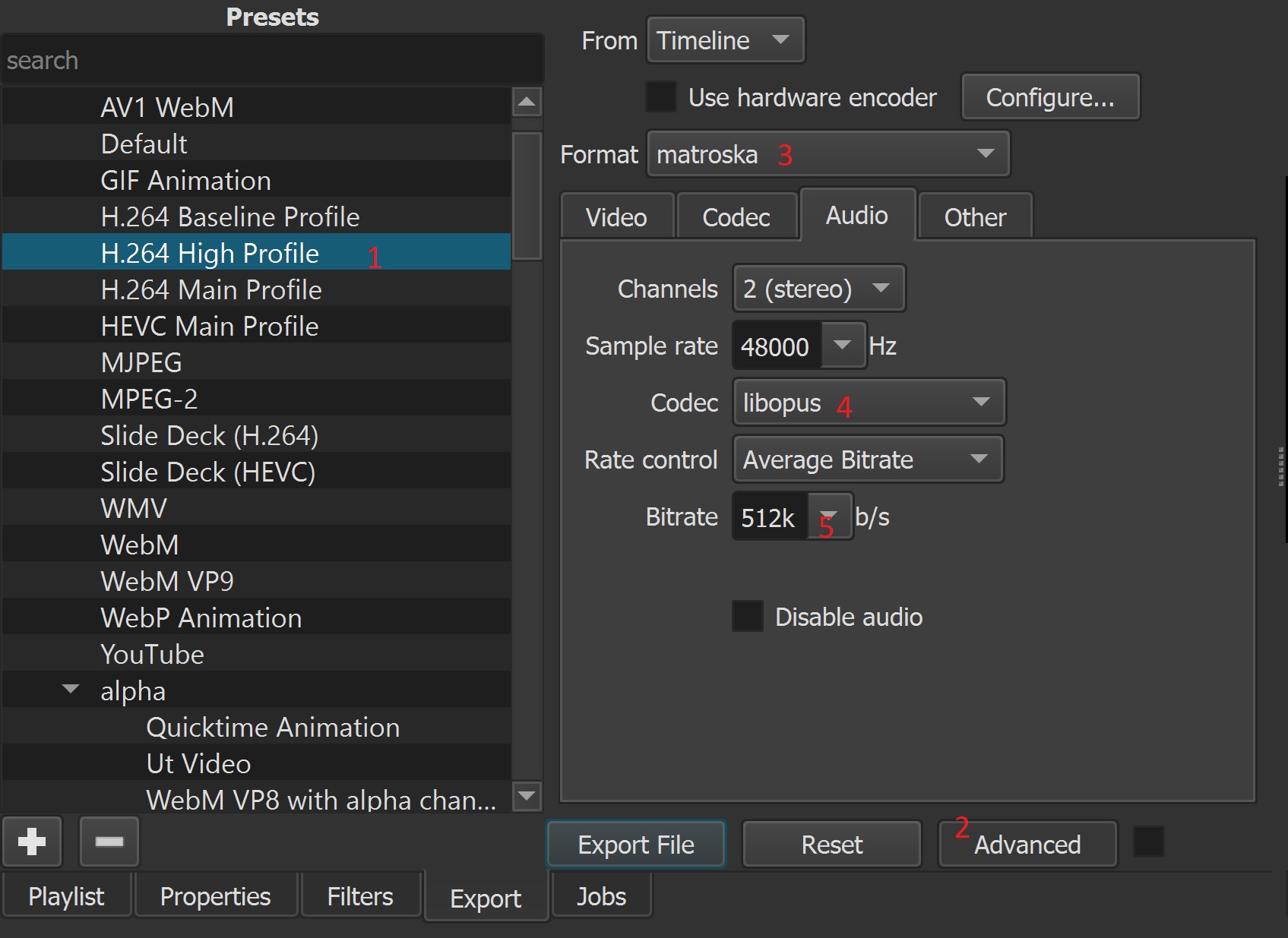Home>Devices & Equipment>Streaming>What Is Considered A High-Quality Bitrate For Streaming Music


Streaming
What Is Considered A High-Quality Bitrate For Streaming Music
Modified: March 9, 2024
Learn what is considered a high-quality bitrate for streaming music and how it impacts your listening experience. Find out the best streaming bitrate for optimal audio quality.
(Many of the links in this article redirect to a specific reviewed product. Your purchase of these products through affiliate links helps to generate commission for AudioLover.com, at no extra cost. Learn more)
Table of Contents
Introduction
In the digital age, music streaming has become an integral part of our daily lives. Whether we're unwinding after a long day, working out at the gym, or simply enjoying a leisurely afternoon, streaming music offers a convenient and immersive way to experience our favorite tunes. However, the quality of the audio we stream can significantly impact our overall listening experience. This is where bitrate comes into play.
When it comes to streaming music, bitrate is a crucial factor that directly influences the quality of the audio we hear. Understanding what constitutes a high-quality bitrate for streaming music is essential for both music enthusiasts and casual listeners alike. In this article, we'll delve into the intricacies of bitrate, explore the factors that affect streaming music quality, and ultimately determine what qualifies as a high-quality bitrate in the realm of music streaming.
As we embark on this journey, we'll unravel the technical aspects of bitrate, demystify its significance in the context of streaming music, and equip you with the knowledge to make informed decisions when selecting the ideal bitrate for your streaming preferences. So, let's dive into the world of streaming music and unravel the mysteries of bitrate to ensure that every note, beat, and melody reaches our ears in the highest quality possible.
Understanding Bitrate
At its core, bitrate refers to the amount of data transmitted per unit of time, typically measured in kilobits per second (kbps) for audio streaming. In the context of music streaming, bitrate directly impacts the quality of the audio playback, with higher bitrates generally resulting in better sound fidelity. To comprehend the significance of bitrate, it's essential to grasp the concept of digital audio compression.
Digital audio files are often compressed to reduce their size for efficient storage and transmission. This compression process involves encoding the audio data in a manner that minimizes file size while endeavoring to retain the original audio quality. Bitrate plays a pivotal role in this process, as it determines the amount of data allocated to represent each second of audio.
When a higher bitrate is employed, more data is allocated to represent the audio, resulting in enhanced sound quality and finer detail. Conversely, lower bitrates allocate less data to represent the audio, potentially leading to a loss of audio fidelity and detail. Therefore, bitrate serves as a critical factor in determining the level of audio quality delivered during music streaming.
In the realm of digital audio, there are various bitrate standards commonly encountered, each with its own implications for audio quality. For instance, the widely recognized MP3 format offers a range of bitrates, from as low as 64 kbps to as high as 320 kbps, with higher bitrates generally delivering superior audio fidelity. Similarly, streaming platforms often offer varying bitrate options, allowing users to select their preferred balance between audio quality and data usage.
Understanding bitrate is crucial for discerning the trade-offs between audio quality and file size in the realm of music streaming. By comprehending the impact of bitrate on audio fidelity, listeners can make informed decisions when selecting the ideal bitrate for their streaming preferences, ensuring an immersive and high-quality listening experience.
Factors Affecting Streaming Music Quality
Several factors play a pivotal role in determining the quality of music streaming, influencing the overall listening experience for users. Understanding these factors is essential for discerning the nuances of streaming music quality and making informed decisions when selecting the optimal bitrate for audio streaming.
-
Bitrate Selection: The bitrate chosen for streaming directly impacts the audio quality. Higher bitrates result in better sound fidelity, capturing more intricate details of the music. Conversely, lower bitrates may lead to audio compression and a potential loss of quality. Therefore, the bitrate selected significantly influences the overall streaming music quality.
-
Internet Connection: The stability and speed of the internet connection profoundly affect music streaming quality. A robust and high-speed internet connection facilitates the seamless transmission of audio data, minimizing buffering and ensuring a consistent, high-quality listening experience. Conversely, a slow or unstable internet connection may lead to interruptions, buffering, and a reduction in audio quality.
-
Device and Audio Equipment: The device used for music streaming, along with the quality of audio equipment such as headphones or speakers, directly impacts the perceived audio quality. High-quality audio equipment can enhance the nuances of the music, providing a more immersive and detailed listening experience. Conversely, using low-quality or inadequate audio equipment may limit the fidelity and richness of the audio, affecting the overall streaming music quality.
-
Audio Compression Algorithms: The compression algorithms employed during audio encoding and streaming play a crucial role in determining the final audio quality. Advanced compression algorithms can effectively reduce file sizes while preserving audio fidelity. However, suboptimal compression techniques may lead to artifacts, loss of detail, and a reduction in overall audio quality.
-
Streaming Platform and Encoding Standards: Different streaming platforms utilize varying encoding standards and bitrate options. The encoding standards and bitrate options offered by a streaming platform directly impact the available audio quality. Some platforms may offer higher bitrate options, enabling users to experience superior audio quality, while others may prioritize efficient data transmission over audio fidelity.
By considering these factors, users can gain a comprehensive understanding of the elements influencing streaming music quality. This knowledge empowers them to make informed decisions when selecting the bitrate for music streaming, ensuring an enriching and immersive audio experience.
What Is Considered a High-Quality Bitrate?
When determining what constitutes a high-quality bitrate for streaming music, it's essential to consider the balance between audio fidelity and file size. Generally, a high-quality bitrate for music streaming is one that delivers rich, detailed audio while minimizing perceptible loss in quality. While individual preferences and discerning ears may influence the perception of audio quality, certain bitrate standards are widely recognized as indicative of high-quality streaming.
In the realm of digital audio, bitrates of 320 kbps and above are commonly regarded as high-quality for music streaming. At 320 kbps, the audio data transmitted per second is substantial, allowing for a more faithful representation of the original audio. This higher bitrate facilitates the preservation of intricate musical details, including nuances in instrument timbre, spatial depth, and dynamic range, resulting in a more immersive and engaging listening experience.
Furthermore, bitrates exceeding 320 kbps, such as those offered by lossless audio formats like FLAC (Free Lossless Audio Codec) or ALAC (Apple Lossless Audio Codec), are considered exceptionally high-quality for music streaming. These formats prioritize audio fidelity and accuracy, aiming to reproduce the original recording with utmost precision. By employing bitrates well beyond 320 kbps, lossless audio formats capture an extensive range of frequencies and sonic subtleties, ensuring an unparalleled listening experience for audiophiles and music enthusiasts.
It's important to note that the perceived difference in audio quality between various bitrates is contingent on factors such as the listener's equipment, discernment, and the complexity of the music being streamed. While higher bitrates generally offer superior audio fidelity, the discernible difference may vary based on individual preferences and the listening environment.
In essence, a high-quality bitrate for streaming music is characterized by its ability to faithfully convey the richness and depth of the original audio, capturing the intricacies of the music with minimal perceptible loss in quality. By selecting a high-quality bitrate, listeners can elevate their streaming music experience, immersing themselves in the sonic tapestry of their favorite tracks with unparalleled clarity and detail.
Choosing the Right Bitrate for Streaming Music
Selecting the right bitrate for streaming music is a pivotal decision that directly influences the quality of the audio experience. When navigating the myriad of bitrate options offered by streaming platforms, it's essential to consider several factors to ensure an optimal balance between audio fidelity and data usage.
First and foremost, understanding one's preferences and listening environment is crucial when choosing the ideal bitrate. For individuals who prioritize uncompromising audio quality and have access to ample storage and high-speed internet, opting for higher bitrates, such as 320 kbps or lossless formats like FLAC, can deliver an immersive and detailed listening experience. These higher bitrates excel in capturing the nuances of the music, making them ideal for audiophiles and discerning listeners seeking the utmost fidelity.
Conversely, users concerned with data consumption or those streaming music in environments with bandwidth limitations may find lower bitrates, such as 128 kbps or 192 kbps, to be more suitable. While these bitrates may exhibit a slight reduction in audio fidelity compared to higher options, they offer a balance between quality and data efficiency, ensuring a seamless streaming experience without excessive data usage.
Furthermore, considering the playback devices and audio equipment is essential when choosing the right bitrate for streaming music. High-quality headphones, speakers, or audio systems can accentuate the nuances captured in higher bitrates, enhancing the overall listening experience. Conversely, when using standard earphones or portable speakers, the perceptible difference between various bitrates may be less pronounced, allowing for flexibility in bitrate selection based on data constraints or storage considerations.
Additionally, exploring the bitrate options provided by streaming platforms is instrumental in making an informed decision. Some platforms offer adaptive bitrate streaming, dynamically adjusting the bitrate based on network conditions to maintain a consistent listening experience. This feature can be advantageous for users with fluctuating internet speeds, ensuring uninterrupted playback while optimizing audio quality.
Ultimately, choosing the right bitrate for streaming music involves a thoughtful consideration of individual preferences, internet connectivity, playback devices, and the bitrate options available. By aligning these factors with personal priorities, users can tailor their bitrate selection to suit their unique listening habits, ensuring an enriching and seamless music streaming experience.
Conclusion
In the ever-evolving landscape of music streaming, the quest for high-quality audio experiences remains a paramount concern for enthusiasts and casual listeners alike. As we conclude our exploration of bitrate and its implications for streaming music, it becomes evident that the pursuit of audio fidelity is intricately linked to the choices we make when selecting the ideal bitrate.
The significance of bitrate in shaping the quality of streaming music cannot be overstated. It serves as a fundamental determinant of audio fidelity, influencing the richness, detail, and immersive nature of the listening experience. By understanding the nuances of bitrate and its impact on audio quality, users can make informed decisions that align with their preferences and listening environments.
When considering what constitutes a high-quality bitrate for streaming music, the threshold of 320 kbps emerges as a widely recognized standard for delivering rich, detailed audio. This bitrate, and those exceeding it in lossless audio formats, encapsulate the subtleties and intricacies of music with remarkable fidelity, catering to the discerning ears of audiophiles and enthusiasts seeking an unparalleled sonic journey.
However, the journey to selecting the right bitrate extends beyond numerical thresholds. It encompasses a holistic understanding of individual preferences, internet connectivity, playback devices, and the bitrate options offered by streaming platforms. By harmonizing these elements, users can tailor their bitrate selection to suit their unique listening habits, ensuring an enriching and seamless music streaming experience.
As technology continues to advance and streaming platforms evolve, the landscape of bitrate and audio quality will undoubtedly witness further refinements. Adaptive bitrate streaming, enhanced compression algorithms, and innovative encoding standards will continue to shape the future of streaming music, offering users a spectrum of options to tailor their audio experiences to their preferences and constraints.
In essence, the pursuit of high-quality bitrate for streaming music is a journey of balance, where audio fidelity, data efficiency, and personal preferences converge. By embracing this journey with discernment and awareness, users can elevate their streaming music experiences, immersing themselves in the sonic tapestry of their favorite tracks with unparalleled clarity and detail. As we continue to navigate the realms of streaming music, let us embark on this journey with an unwavering commitment to the pursuit of audio excellence, ensuring that every note, beat, and melody reaches our ears in the highest quality possible.











